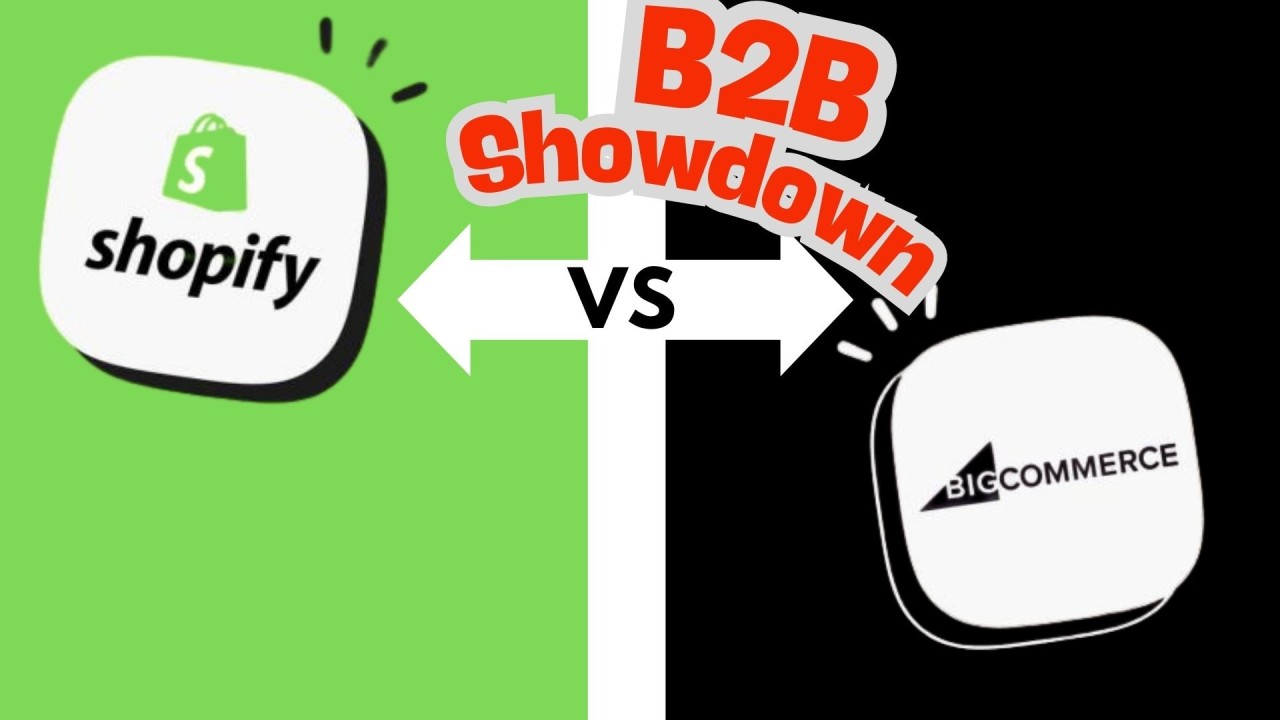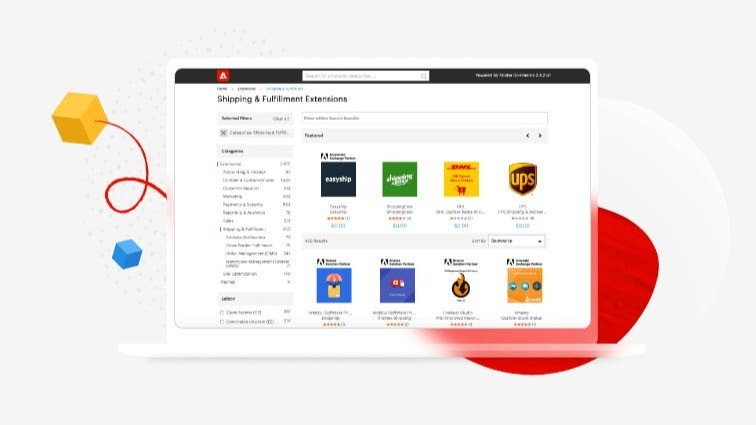
By Brent W Peterson
After surviving the AI tsunami that was ShopTalk 2025, I managed to have some actual conversations about e-commerce fundamentals. I know, shocking.
Between dodging demos of "AI-powered shopping carts that read your customers' minds" and "AI assistants that write product descriptions while doing your taxes," I found myself curious about a more basic question who's actually delivering on B2B e-commerce promises?
My curiosity was further piqued by Ian Sells recent analysis of BigCommerce's direct challenge to Shopify. His breakdown of their three-pronged product launch highlighted something that resonated with me: while "Shopify built an empire on control, BigCommerce is betting on openness."
This contrast between control and openness got me thinking about how it plays out in the B2B space specifically. Everyone and their investor pitch deck is offering B2B solutions these days. You'd think we'd reached some kind of B2B nirvana where all platforms handle complex business purchasing equally well. But after digging beneath the buzzwords, I discovered that's not quite reality.
I spent time with folks from both Shopify and BigCommerce at ShopTalk, and while I don't want to turn this into a comprehensive feature comparison spreadsheet (you're welcome), a couple of critical differences emerged that deserve attention.
These aren't minor features — they're fundamental architectural capabilities that affect how B2B businesses operate daily. And surprisingly, despite confident claims to the contrary, Shopify Plus and BigCommerce aren't on equal footing here.
Let me share what I learned about multi-store management and corporate account hierarchies — and why it matters more than whatever AI acronym is trending this week.
I had several deep conversations about B2B e-commerce solutions. Repeatedly, I heard that Shopify would confidently handle all B2B requirements. But when pressed on specifics, the reality became murkier.
Some critical gaps emerged in Shopify's B2B offering:
Multi-store Management - B2B often requires managing multiple storefronts from a single backend, something Shopify simply cannot do without creating entirely separate instances.
Corporate Account Hierarchies - Complex B2B relationships require sophisticated account structures with parent-child relationships and varied permission levels that Shopify's system doesn't natively support.
The third area where I noticed significant differences was in tools for sales representatives. In B2B, the human touch still matters tremendously.
When your platform lacks proper sales rep tools:
This last point became even more apparent when BigCommerce announced their new Configure-Price-Quote (CPQ) tools. Their approach empowers sales teams to "quote smarter and sell faster" with a completely redesigned sales rep experience. The new system streamlines operations with a more configurable interface, accelerates revenue growth by cutting quoting steps by 75%, and allows for personalized buyer experiences across both B2B and B2C channels.
This kind of purpose-built functionality for B2B selling stands in stark contrast to the more limited approaches I was seeing elsewhere.
The consequences of these limitations are significant:
The Multi-Store Dilemma One of the most glaring differences I discovered relates to how these platforms handle multiple storefronts. For many B2B operations, especially those with multiple brands or markets, managing separate stores from a single backend isn't just convenient—it's essential.
When you can't manage multiple stores from one account, you face real business problems:
Managing separate Shopify instances means duplicate work for your team Inventory becomes inconsistent across stores, creating a logistical nightmare Customer data remains siloed, preventing a unified view of your business Scaling becomes exponentially more complex with each new store
Corporate Account Hierarchy Reality The second major gap I found was in how the platforms handle corporate account structures. In genuine B2B commerce, you need hierarchy—parent companies with subsidiaries, departments with different buyers and approvers.
Without proper account hierarchies, your business suffers:
Enterprise customers expect sophisticated permission structures Manual workarounds create operational inefficiencies Finance teams struggle with reconciliation across complex organizations You risk losing major accounts who require this functionality
Sales Rep Tools and Capabilities The third area where I noticed significant differences was in tools for sales representatives. In B2B, the human touch still matters tremendously.
When your platform lacks proper sales rep tools:
Representatives can't effectively manage customer relationships Quote creation becomes a cumbersome process Visibility into customer activity is limited Your sales team wastes time on manual processes instead of relationship building The bigger issue: When you build on a platform based on promises rather than actual capabilities, you inevitably hit painful, expensive roadblocks down the road.
In my years working with e-commerce platforms, I've seen this pattern repeatedly. A platform's sales team confidently says "yes" to capability questions, only for implementation teams to later explain the complex workarounds required.
What's particularly frustrating is when customization gets presented as a solution to architectural limitations. There's a fundamental difference between "We don't have that feature natively, but our open architecture lets you build it" versus "We simply can't do that because of our core structure."
This is where BigCommerce's open SaaS approach creates a meaningful advantage. When a feature isn't available out-of-the-box, their API-first architecture actually allows you to extend the platform. I've watched development teams leverage BigCommerce's robust APIs and webhooks to create custom B2B solutions that seamlessly integrate with the core platform.
Contrast this with more closed systems where the answer is often "No, but maybe in our next roadmap release" or "Yes, if you buy these three separate apps and hope they work together." The difference isn't just in features—it's in the fundamental adaptability of the platform to your business needs.
Full disclosure: I've verified these specific Shopify limitations through conversations with BigCommerce representatives who outlined the fundamental architectural differences between the platforms. While I believe my assessment is accurate, I welcome correction from Shopify users or employees if I've misunderstood any capabilities.
And I genuinely want to know—has anyone successfully implemented true multi-store management or complex corporate hierarchies on Shopify without creating separate instances or extensive workarounds? I'm always open to learning about solutions I might have missed.
This isn't just about Shopify versus BigCommerce. It's about a pattern I've seen play out repeatedly in enterprise technology decisions.
Picture this: A solution partner walks into an executive boardroom, ready to pitch Shopify. The slides look great, the brand name carries weight, and there's that comforting feeling of choosing the market leader. Questions about specific technical requirements are met with confident nods and quick "Yes, we can do that" responses. Before you know it, the executive team has made their decision without digging into whether the platform will actually meet their unique B2B requirements.
Maybe I'm exaggerating, but not by much. I've watched this scene play out numerous times across organizations of all sizes.
The reality? Maybe 90% of the time there is a workaround for limitations discovered after purchase. But that final 10% can completely derail your business requirements or multiply your implementation costs. And even when workarounds exist, they often create technical debt that haunts you for years.
This raises several critical questions about how we evaluate technology partners:
The platform with the best marketing isn't necessarily the one with the best fit for your specific business requirements. Sometimes the "safe choice" based on market share creates the riskiest implementation.
The next time you're evaluating B2B e-commerce platforms, go beyond the sales pitch. Demand concrete answers to these critical questions:
Can your sales reps create quotes, process orders, and manage accounts directly in the system without workarounds? How exactly does your platform handle multiple stores from a single backend? Can I see it demonstrated? Show me how corporate account hierarchies work—can a parent company manage multiple child companies with different permission levels? Can customers place orders on credit terms without immediate payment? How do you handle customer-specific pricing, catalogs, and inventory visibility? What percentage of these features are native versus requiring third-party apps? Can I speak with reference customers who are successfully using these specific capabilities? Remember, the strongest platform isn't the one with the slickest marketing or the biggest market share—it's the one architected from the ground up to handle your specific B2B requirements without compromise.
The cost of choosing wrong isn't just the platform subscription—it's the mounting technical debt, frustrated customers, and lost opportunities that follow when your business outgrows artificial limitations.
I'm curious—what has been your experience with platform capabilities versus sales promises? Have you ever implemented a solution only to discover fundamental limitations too late? Or have you found Shopify's B2B capabilities sufficient for your needs?
Share your experiences in the comments. The more we talk openly about these realities, the better decisions we can all make.

The $50,000 Management Problem In my former role as President of Wagento Creative, I watched merchants s...

For years, I've viewed Adobe's acquisition of Magento through a skeptical lens. Like many in the communi...